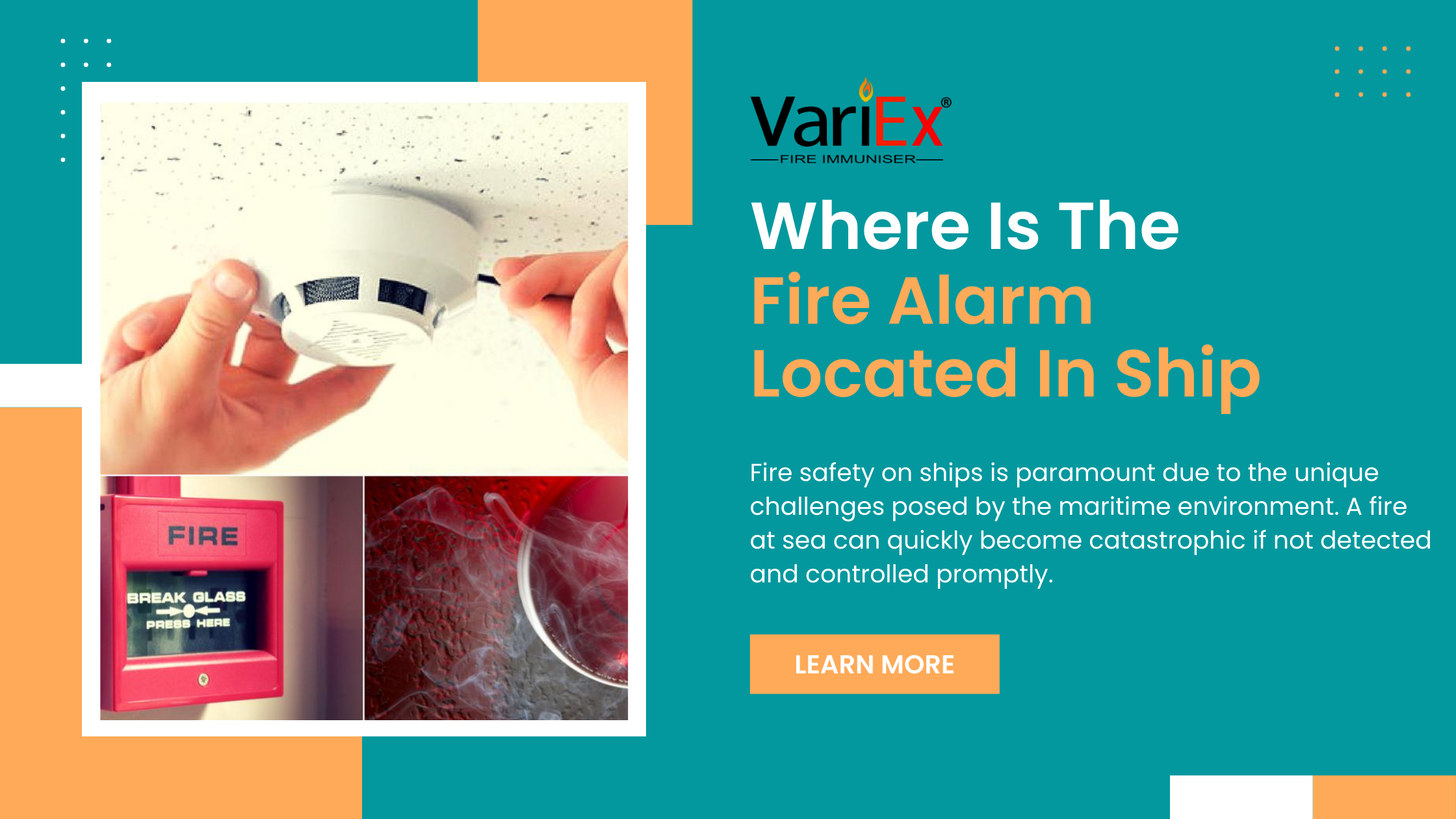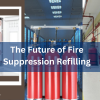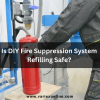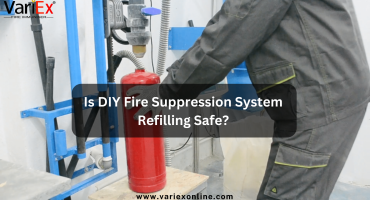![]()
Fire Immuniser
+91-7829629111
Email: info@variex.in
Varistor Technologies Pvt. Ltd.
Block-1, First Floor, Ardente Office One, Hoodi Circle, ITPL Main Road, Bengaluru, Karnataka 560048, IN
Where Is The Fire Alarm Located In Ship
Where Is The Fire Alarm Located In Ship
Fire safety on ships is paramount due to the unique challenges posed by the maritime environment. A fire at sea can quickly become catastrophic if not detected and controlled promptly. Fire alarms are a critical component of a ship’s fire safety system, providing early detection and warning to ensure the safety of passengers, crew, and the vessel itself. This comprehensive guide will explore the strategic placement of fire alarms on ships, the reasoning behind these placements, and the regulatory standards governing them.
Importance of Fire Alarm Placement on Ships
Proper fire alarm placement on ships is crucial for several reasons:
- Early Detection: Fires on ships can spread rapidly due to confined spaces and the presence of flammable materials. Early detection is vital to prevent small fires from becoming uncontrollable.
- Life Safety: Ships often have a high density of passengers and crew in a relatively small area. Early warnings allow for timely evacuations and fire control measures, protecting lives.
- Property Protection: Ships are valuable assets, and fires can cause significant damage to the vessel and cargo. Prompt detection and response can minimize damage.
- Regulatory Compliance: Maritime regulations mandate specific fire safety measures, including the placement of fire alarms, to ensure the safety of vessels and their occupants.
General Guidelines for Fire Alarm Placement on Ships
- Accommodation Areas: Fire alarms should be placed in all accommodation areas, including passenger cabins, crew quarters, lounges, and recreation rooms. This ensures that everyone on board is alerted to a fire, regardless of their location.
- Engine Rooms: Engine rooms are high-risk areas due to the presence of fuel, oil, and machinery. Fire alarms should be strategically placed to detect fires early and provide immediate warnings.
- Galley (Kitchens): The galley is another high-risk area where fires can easily start due to cooking activities. Fire alarms should be installed to detect smoke or heat promptly.
- Cargo Holds: Cargo holds can contain flammable materials, making them susceptible to fires. Alarms should be placed to monitor these areas continuously.
- Common Areas: Install fire alarms in common areas such as dining rooms, entertainment venues, hallways, and stairwells to ensure comprehensive coverage.
- Control Rooms and Bridges: The ship's control rooms, including the bridge and engine control room, should have fire alarms to protect critical operational areas.
- Storage Areas: Alarms should be installed in storage areas where flammable materials, cleaning supplies, and other combustibles are kept.
Specific Considerations for Different Types of Ships
- Passenger Ships and Cruise Liners
- Cabins and Suites: Install fire alarms in all passenger cabins and suites to ensure early detection and warning, allowing for timely evacuations.
- Public Spaces: Public areas such as theaters, dining rooms, bars, and lounges should have fire alarms installed to cover large congregations of people.
- Corridors and Stairwells: These areas are critical for evacuation routes, and alarms here ensure that passengers are alerted and can evacuate safely.
- Cargo Ships
- Engine Rooms and Machinery Spaces: Given the high risk of fire in these areas, alarms should be strategically placed for immediate detection.
- Cargo Holds: Fire alarms should be installed in cargo holds, especially if transporting hazardous or flammable goods.
- Crew Quarters: Install alarms in crew living areas to ensure their safety in case of a fire.
- Tanker Ships
- Pump Rooms: These areas require special attention due to the handling of flammable liquids. Fire alarms must be placed to detect any fire hazards promptly.
- Cargo Tanks: Monitoring of cargo tanks is essential, especially when carrying flammable or combustible liquids.
- Accommodation Areas: Ensure that alarms are installed in all living quarters to protect the crew.
Regulatory Standards and Compliance
Several international regulations govern the placement of fire alarms on ships:
- SOLAS (Safety of Life at Sea): The International Convention for the Safety of Life at Sea sets out minimum safety standards for the construction, equipment, and operation of ships. SOLAS regulations require ships to have comprehensive fire detection and alarm systems.
- International Maritime Organization (IMO) Standards: The IMO provides guidelines and standards for fire safety systems on ships, including the placement of fire alarms.
- Classification Societies: Organizations like Lloyd's Register, DNV GL, and the American Bureau of Shipping (ABS) have specific requirements for fire alarm systems on ships they classify.
- Flag State Regulations: Each country’s maritime authority may have additional regulations that ships must comply with based on their flag state.
Factors Influencing Fire Alarm Placement on Ships
Several factors must be considered when determining the optimal placement of fire alarms on ships:
- Ship Layout: The design and layout of the ship influence where fire alarms should be placed to ensure complete coverage.
- Fire Risk Areas: High-risk areas like engine rooms, galleys, and cargo holds require focused alarm placement.
- Ventilation Systems: The ship's HVAC system can affect smoke movement, so alarms should be placed to account for airflow patterns.
- Occupant Density: Areas with high occupancy, such as dining rooms and theaters, need more alarms to ensure early detection.
- Accessibility for Maintenance: Alarms must be accessible for regular testing and maintenance, following manufacturer guidelines and regulatory requirements.
Best Practices for Fire Alarm Placement on Ships
- Ceiling and Wall Placement: Smoke alarms should be placed on the ceiling or high on the wall, as smoke rises. In areas with high ceilings, multiple alarms may be needed.
- Avoiding Obstructions: Ensure that alarms are not obstructed by equipment, furnishings, or structural elements that could impede smoke detection.
- Distance from Appliances: Avoid placing alarms too close to kitchens or machinery to prevent false alarms. Heat detectors can be used in these areas.
- Interconnected Alarms: Interconnected alarms ensure that when one alarm is triggered, all alarms sound, providing comprehensive warnings throughout the ship.
- Regular Maintenance: Test alarms regularly, replace batteries at least once a year, and replace the entire unit according to the manufacturer's recommendations to ensure reliability.
Advanced Fire Detection Technologies for Ships
- Multi-Sensor Alarms: These combine smoke, heat, and CO2 detection, providing more comprehensive monitoring and reducing false alarms.
- Addressable Fire Alarm Systems: These systems allow for specific location identification of the fire, enabling quicker and more precise responses.
- Integrated Alarm Systems: Integrating fire alarms with other ship systems (e.g., ventilation control, fire suppression) can enhance overall safety and response efficiency.
Case Studies and Real-Life Examples
- Cruise Ship Fire: A fire broke out in the engine room of a cruise ship. Thanks to strategically placed alarms, the fire was detected immediately, and the crew could extinguish it quickly, preventing harm to passengers and significant damage to the ship.
- Cargo Ship Incident: A fire started in the cargo hold of a container ship. Fire alarms in the hold alerted the crew, who activated the fire suppression system and contained the fire before it spread.
- Fishing Vessel Fire: A small fire in the galley of a fishing vessel was detected by a heat detector. The crew was able to extinguish the fire quickly, avoiding damage to the vessel and ensuring the safety of everyone on board.
Conclusion
Proper fire alarm placement on ships is a critical aspect of maritime safety. By strategically positioning fire alarms throughout the vessel, from accommodation areas to engine rooms and cargo holds, ship operators can ensure early detection of fires, provide timely warnings to passengers and crew, and facilitate effective fire control measures. Adhering to regulatory standards and best practices further enhances the effectiveness of fire alarm systems, protecting lives and property. Regular maintenance and the use of advanced detection technologies also contribute to a robust fire safety strategy, offering peace of mind and a higher level of security for all aboard.
Frequently Asked Questions
Fire alarms should be installed inside each passenger cabin to ensure that occupants are alerted promptly in case of a fire, allowing for timely evacuation and response.
Engine rooms are high-risk areas due to the presence of fuel, oil, and machinery. Placing fire alarms in these areas ensures early detection of fires, preventing small fires from becoming uncontrollable.
Fire alarms should be placed near, but not directly in, ship galleys to detect smoke or heat from cooking activities. Using heat detectors can help avoid false alarms while providing necessary protection.
Yes, fire alarm placement on ships is governed by regulations such as the Safety of Life at Sea (SOLAS) convention, International Maritime Organization (IMO) standards, and requirements from classification societies like Lloyd's Register and DNV GL.
Fire alarms on ships should be tested regularly, with routine maintenance and battery replacements at least once a year. Entire units should be replaced according to the manufacturer's recommendations to ensure reliability and compliance with safety regulations.
Final Say
At VariEx.in and VariexOnline.com, we specialize in supplying and installing top-quality fire fighting systems and equipment. From fire extinguishers to advanced suppression systems, we offer comprehensive solutions tailored to your needs. Our experienced team ensures precise installation and maintenance for optimal safety.
Trust VariEx for reliable fire protection. Contact us online or call 7829629111 to learn more.
We specialize in manufacturing, supplying, and distributing a comprehensive range of fire fighting equipment, including state-of-the-art fire extinguishers. Read our most searched blogs and find interesting information on topics such as how to use a fire extinguisher, how to calculate fire fighting water tank capacity, fire extinguisher refilling, obtaining a Fire NOC, understanding fire fighting systems, types of fire protection systems, the fire hydrant system, and the fire sprinkler system. These resources provide essential knowledge for ensuring safety and compliance with fire safety regulations. Additionally, you can explore guides on the maintenance of fire protection equipment, the latest advancements in fire safety technology, and best practices for fire risk assessment and management.
Our expertise extends to fire alarm systems, fire hydrant systems, and fire suppression systems, including fire sprinklers. Each product meets rigorous international standards for reliability and performance, ensuring effective fire safety products tailored to diverse applications and industries. Additionally, we are providing Fire Extinguisher Refilling and AMC services to ensure ongoing maintenance and operational readiness of fire safety equipment.











